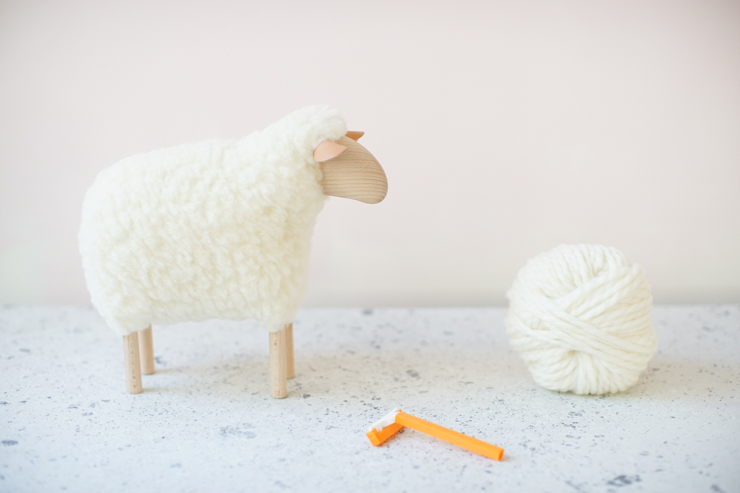SEWING FABRICS: WOOL[:]

Hello fellow sewing girls (and boys)!
As temperatures are cool right now, here’s a short article on a fiber that’ll be your best friend: wool!
So, what is it? It’s none other than the fleece of sheep or another animal. It can be alpaca wool (an animal related to the llama), angora (from a rabbit or an angora goat, not a cat), or even a camel! It’s important to remember that fleece only comes from harvested "hairs”, the animal is not killed, and for sheep it’s even a good thing for them, helping rid them of hair growth (just like when you go to the hairdresser for a trim). These fibers are normally soft and made into a thread that can be knitted, woven or felted. The peculiarity of this material is that it absorbs very little water and in addition to being insulated from the cold, it regulates body heat.
How can it be recognized? As always, you can burn it. The smell is not very pleasant, like burnt hair with very black ashes. To the touch, it is fluffy and plush.
What does it do? Of course, it is the ideal material for winter. Wool coats and jackets keep you warm and slightly absorb the rain and snow (now, I’m not suggesting you go outside when it’s raining cats and dogs). Very fine and worsted, it makes great suits. It’s naturally slightly elastic, especially when it is not worsted.
What weave to choose? As a thread, you can knit it. For weaving, you can make jackets, coats, suits, dresses, skirts ... Pay attention to its name and appearance! A puffy, carded wool will be very easy to work with, perfect for a beginner making a coat. For a much more insulating and waterproof material (for example jackets, skirts, or hats) felted or boiled wool is THE answer. Felted or boiled mean that the fibers are stacked in layers, moistened or steamed, so that they clump together. Once the "mattress" of fibers are dry, the fibers won’t fray or pill. Worsted wool has a very fine and tight weave that’s perfect for suits, or winter dresses, but beware, it’s not at all easy to work with, I recommend it to advanced users.
Before you go, some names should be explained:
- Virgin wool means that it is a wool that has not been recycled
- baby wool comes from the first fleece of the animal, often a baby
- Super 80's to 250's (based on the number), it is the fineness of the yarn, the higher the number, the thinner (and more expensive) it is
- Overall, the long fibers are the most popular and most expensive, here are their names: cashmere, angora, alpaca (vicuna).
A couple of last tips for sweaters or coats that collect pills: consider buying a "razor" which will cut the pill off rather than pulling on it which removes the material. Dry clean your clothes, sweaters too, or hand wash using a mild shampoo in cold / warm water and dry flat, without spinning.
Keep warm, see you very soon with our new collection!
Laure
Translated by Whitney Bolin



